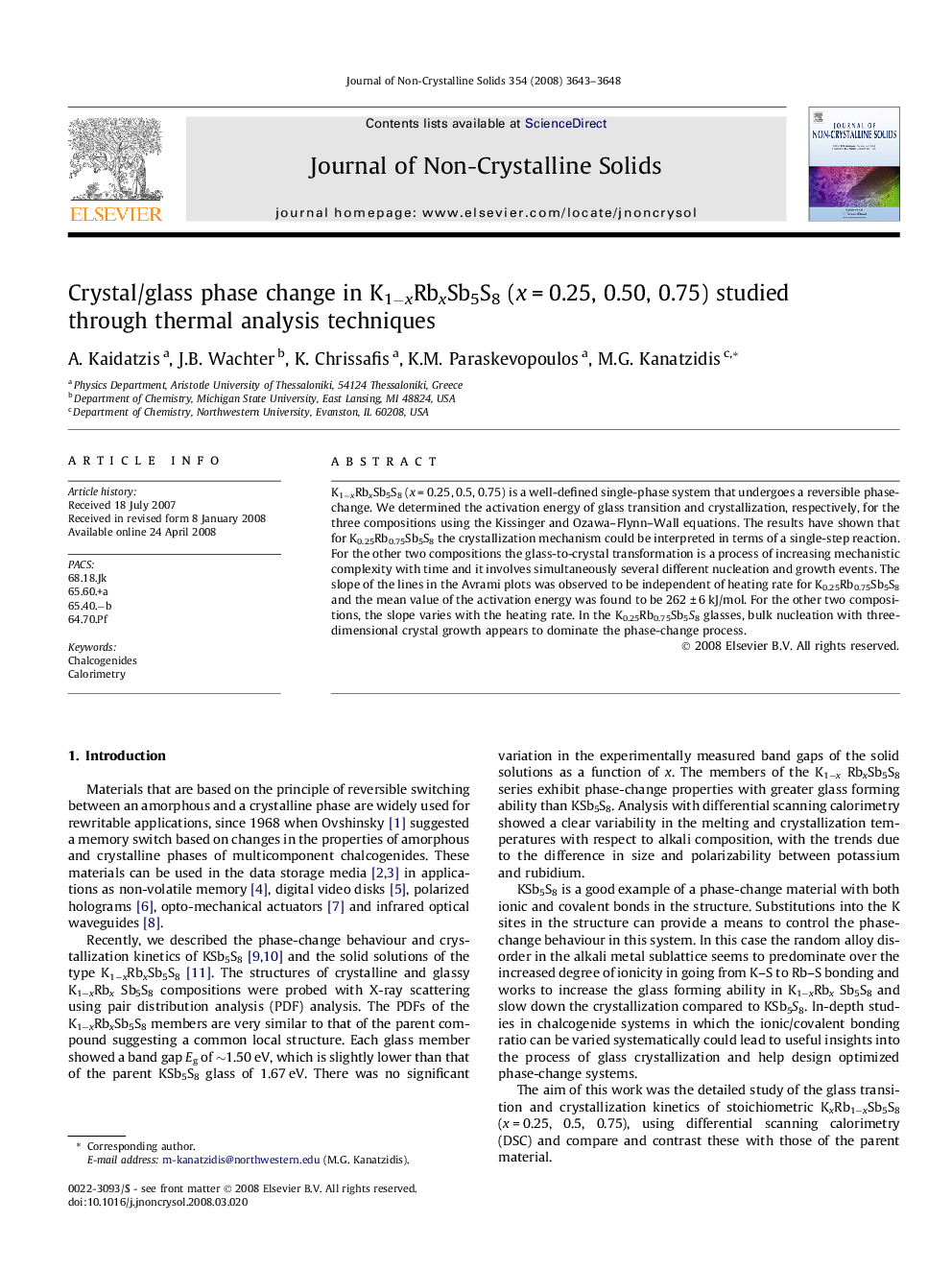| Article ID | Journal | Published Year | Pages | File Type |
|---|---|---|---|---|
| 1484756 | Journal of Non-Crystalline Solids | 2008 | 6 Pages |
Abstract
K1âxRbxSb5S8 (x = 0.25, 0.5, 0.75) is a well-defined single-phase system that undergoes a reversible phase-change. We determined the activation energy of glass transition and crystallization, respectively, for the three compositions using the Kissinger and Ozawa-Flynn-Wall equations. The results have shown that for K0.25Rb0.75Sb5S8 the crystallization mechanism could be interpreted in terms of a single-step reaction. For the other two compositions the glass-to-crystal transformation is a process of increasing mechanistic complexity with time and it involves simultaneously several different nucleation and growth events. The slope of the lines in the Avrami plots was observed to be independent of heating rate for K0.25Rb0.75Sb5S8 and the mean value of the activation energy was found to be 262 ± 6 kJ/mol. For the other two compositions, the slope varies with the heating rate. In the K0.25Rb0.75Sb5S8 glasses, bulk nucleation with three-dimensional crystal growth appears to dominate the phase-change process.
Related Topics
Physical Sciences and Engineering
Materials Science
Ceramics and Composites
Authors
A. Kaidatzis, J.B. Wachter, K. Chrissafis, K.M. Paraskevopoulos, M.G. Kanatzidis,
